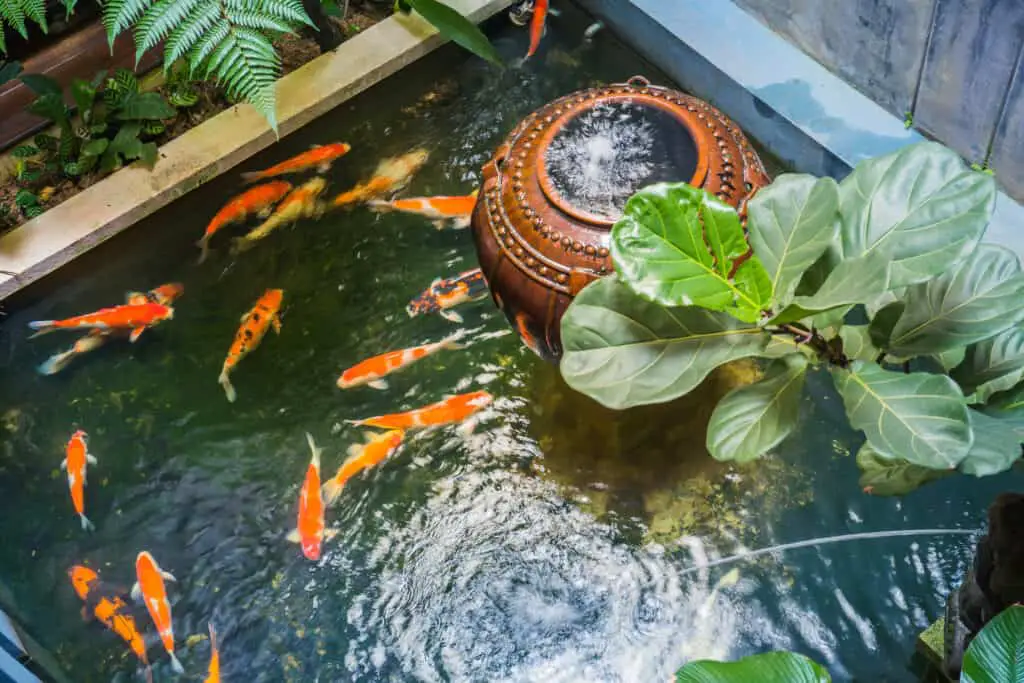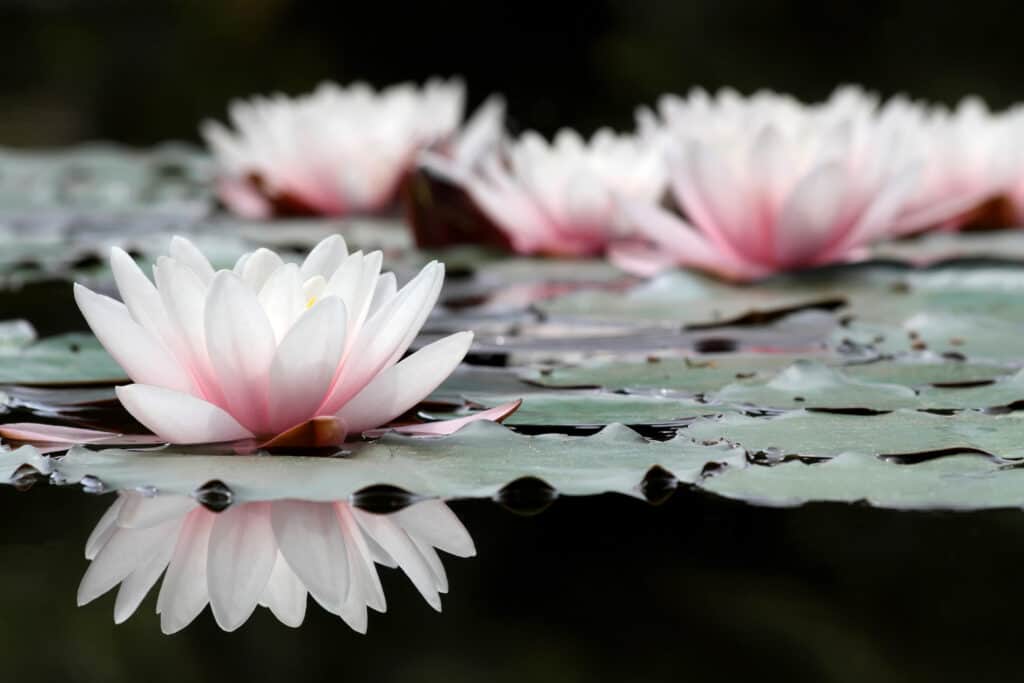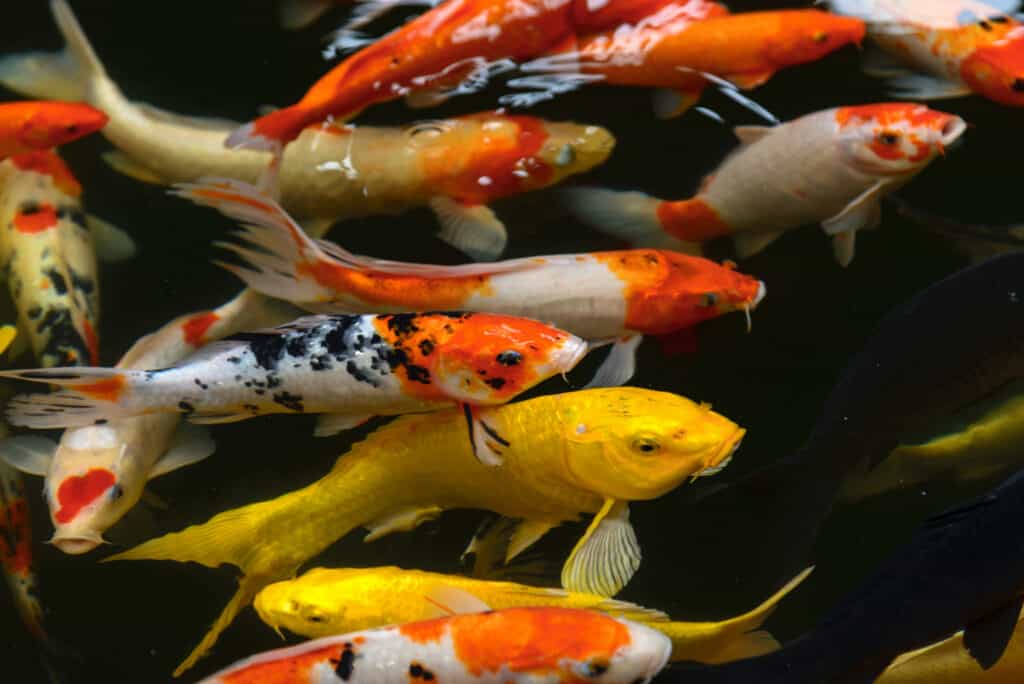
So many lucky people who found the hobby of keeping koi fish will know that it can be a thrilling and exciting pastime. Bringing the koi pond indoors is less complicated than you think. It’s relaxing and low maintenance, and spending time next to your koi pond will provide endless hours of meditation and food for your soul.
Building an indoor koi pond firstly relies on the perfect location. The exterior and interior should be sturdy enough to accommodate a large amount of water. And to keep the koi healthy, you should invest in proper filtration and lighting systems to maintain a healthy, clean environment in the pond.
Whether you want to protect your koi from the harsh winter temperatures or bring your hobby indoors, setting up an indoor koi pond is not so different from creating a koi oasis outdoors in the garden. What is more soothing than a running waterfall splashing into your indoor koi pond with a few majestic koi swimming around while you are entertaining guests?
Pro Tip: If you’re tired of wasting money and making costly mistakes on the koi-keeping hobby or are thinking about buying koi fish but don’t know where to start, I strongly suggest you check out this ebook. I recently read this ebook, and it contains SO much useful information, such as:
- 3 proven steps to identify koi fish diseases
- WARNING: 3 things you should NEVER do when it comes to caring for koi
- When to seek professional help when it comes to looking after your koi
How To Build An Indoor Koi Pond

There are a few simple considerations you need to take into account. Still, the most critical components remain the same: your koi require clean and healthy water and a safe environment, and your water feature should continue to be easy to maintain. Just like every winning recipe, the trick to building an indoor pond has the following essential ingredients:
- Choosing the perfect location.
- Creating the exterior of your koi pond correctly.
- Constructing a worthy interior for the koi pond.
- Lastly, filling the pond.
1. Choosing The Perfect Location
After deciding what size pond you wish to install in your home, you must consider where the perfect setting should be. You’ll have to evaluate how much water the pond will contain as water is weighty and require enough stability, like a basement or the ground floor of your house.
Another point to examine is preventing predators like house pets and small children from gaining access to the pond. You’ll need to assess if you should build a barrier around your pond, build taller walls to the koi pond, or cover your pond with netting to keep the fish from jumping out and keep children and pets from climbing in.
Plan your koi pond’s location by placing the koi pond close to electrical outlets for easy access. The pump, lighting, and filtration systems are necessary to keep the water clean and keep the water circulating. If possible, arrange your plans to expose your koi pond to partial natural sunlight. The light is also necessary for the plants to flourish.
Measure out the pond large enough for a stable, comfortable environment for your fish and plants. Your house’s foundation needs to be secure enough to endure the water capacity you will be placing on top of it. Ensure enough air-through to avoid misty and damp conditions, or a strong ceiling fan to disburse the extra moisture in the air. A dehumidifier is also very helpful in this setting.
2. Creating The Exterior Of The Koi Pond
To start your construction, you will need to acquire walls of the pond from either plywood or concrete blocks. Whether you cut the wood yourself or have it cut by a home improvement store, make sure the length is to your exact specifications.
Construct the boards together by joining the wooden boards or the concrete blocks a layer at a time. Predrill holes in your wooden boards so when your screw them together, they will not crack. Once erected, make sure they are not wobbly. Or, if you’re using cement blocks, ensure that the plaster dries properly in between layers.
To strengthen your wooden structure, reinforce the inside with another layer of plywood and screw them together tightly. The extra security will form a protective lining on the inside. It’s not necessary to strengthen a concrete structure.
3. Constructing The Interior Of The Koi Pond
The inside of the construction might be coarse, with sharp edges that might scrape against the pond liner. To avoid this, you will need to line the inside of your koi pond with a soft material like recycled carpet or insulating Styrofoam. Glue the soft insulation to the interior to create a barrier between the pond lining and the rough interior of the pond.
When you have appropriate protection on the inside, it is time to cut the pool liner to a big enough size to cover the entire interior of the koi pond. Make sure that it is wide enough to fold over the edges of your structure. Fit the liner to pond walls as much as possible. Secure every corner and crevasse to rest on most of the inside surface.
Before nailing the liner in place on top of the pond wall, take the time to test that the liner doesn’t leak by filling about one inch of water. After you’re satisfied, secure the liner in place with roofing nails.
Once the top of the liner is in place, fasten the top of the pond wall with deck boards tightly pressed against the liner to avoid tearing. You can keep them in place by screwing them in as tightly as possible.
4. Filling The Koi Pond

Now that you have finished your koi pond, it is time to fill it with water. But before you do that, you will need to guarantee that your koi pond has a suitable filtration system to keep the water clean and clear of debris. Calculate how much water your pond will contain and get an adequate pump for the size of your koi pond.
Install lights if your pond is deprived of natural light, and add an aquarium heater to keep the water temperature between 52 °F and 60 °F (11 – 16 °C). This will all help to keep your koi healthy and happy.
Cover the base of your koi pond with gravel or sand to hide the ugly pool lining, and build up the sides of the pond with rocks and river stones which also add significantly to the aesthetics of your koi pond.
When you’re happy with the inside of your koi pond, start to fill the structure with running water until it’s about three inches from the top, ensuring there aren’t any leaks along the way.
Establish some aquatic plants in your koi pond and let the water rest before introducing your koi to their new home. Using an aquarium test kit is always good to check if the water will be safe enough for your koi.

Conclusion
Whether you use wood or concrete, bringing your koi pond indoors is a brilliant idea to create a calming atmosphere in your home. A koi pond is easy to maintain and even easier to set up. You need a few materials from the home improvement store and a short guide on putting it together.
References
https://www.wikihow.com/Build-an-Indoor-Pond
https://animals.mom.com/homemade-goldfish-pond-barrel-filter-11695.html
https://www.hartz.com/things-to-consider-before-starting-a-koi-fish-pond/
https://www.petsmart.com/learning-center/fish-care/koi-care-guide/A0017.html
https://www.gardeningknowhow.com/ornamental/water-plants/wgen/indoor-water-ponds.htm

